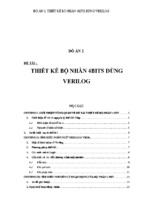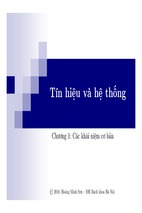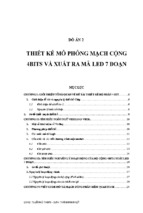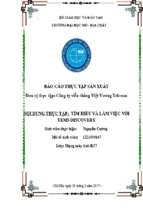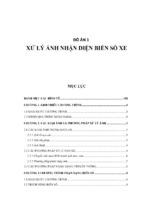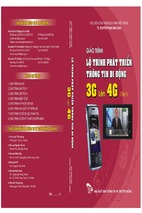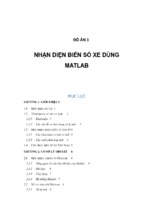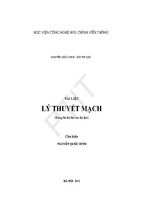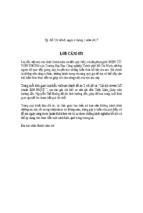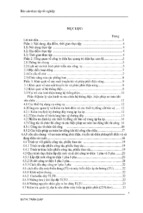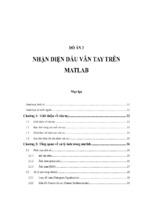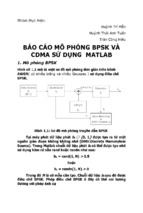4G Radio Access Networks
G. Hiddink
Motorola Mobile Devices
Nieuwegein
April 2010
Slide 1
April 2010
Contents
•
•
•
•
•
•
•
•
•
WiMAX standards development
3GPP standards development
OFDMA PHY basics
OFDMA frame structure
Protocol Stack architecture
Data pipes
WiMAX MAC PDU format
WiMAX Bandwidth Management
WiMAX Scheduling Services
Slide 2
April 2010
WiMAX standards development
•
•
WiMAX = “Worldwide Interoperability for Microwave Access”
industry forum
–
–
–
–
–
–
•
WiMAX Forum Goal
–
–
•
functional entities: Mobile Stations, Base Stations, gateways, routers, ....
interfaces between these entities
air interface: IEEE 802.16
–
–
–
–
–
•
achieve the “world-wide interoperability”
promote WiMAX as a world-wide mobile access technology
Network Architecture
–
–
•
Network Operators
Infrastructure vendors (base stations)
Mobile Station vendors (USB dongles, Customer Premises Equipment (CPE), miniPCI, cellphone)
chipset vendors
Test equipment vendors
totaling > 350 companies
“802” family member
802.3: Ethernet
802.11: WiFi
802.15.1: Bluetooth
802.15.4: Zigbee
Specification status
–
–
IEEE 802.16-2009 currently being deployed as "Mobile WiMAX 1.0"
IEEE 802.16m being developed, supports up to 1 Gbit/s
Slide 3
April 2010
WiMAX standards development (2)
IEEE 802.16 Working Group tasks
• standards development for MAC and PHY layer
• includes many mechanisms, features, functionalities
• enable interoperability by specifying air interface
WiMAX Forum tasks
• develop network architecture
• selects features from existing standards
• composes a ‘system profile’ (for Release 1.0, 1.5, 2.0, etcetera)
• writes certification tests to test mandatory elements of profile
• manages certification process
Slide 4
April 2010
3GP standards development
•
•
•
3GPP: Third Generation Partnership Project
Collaboration project of organizations and companies working on
'GSM' technologies
produces specifications for:
–
–
–
–
–
–
–
•
GSM
EDGE
GPRS
UMTS
HSPA (HSDPA, HSUPA)
LTE
LTE-Advanced
Responsibility can be compared to WiMAX + IEEE 802.16 jointly
–
–
–
–
specify air interface (physical layer, layer 2 protocol stack)
set radio performance requirements (incl radio resource measurements)
specify network architecture and interfaces between network elements
specify certification tests and manage certification process
Slide 5
April 2010
WiMAX vs. 3GPP LTE
•
WiMAX and LTE have similar goals
–
–
–
–
•
develop 3G and 4G technology with throughput up to 1Gbit/s
voice (circuit switched) and data (IP, packet switched) support
integrated TV broadcasting support
similar network elements and evolution paths (relays, home access points)
therefor WiMAX and LTE share a lot of the same problems and solutions
–
–
Spatial Multiplexing (MIMO) to increase throughput
advanced antenna technologies to increase sensitivity and ‘link budget’
•
–
advanced information coding- and combining technologies
•
–
spectrum allocations by regulatory bodies such as FCC, ETSI, ITU
WiMAX and LTE target the same regulatory family, i.e. IMT 2000 and IMT Advanced
this allows for reuse of domain expertise and design modules
–
–
–
•
fast (inverse) FFT of size 512 to 2048
bandwidths of similar size (1.5 MHz to 20 MHz)
TDD as well as FDD support required
similar regulatory constraints
•
•
•
Hybrid ARQ, Maximum Ratio Combining, Alamouti coding, Turbo Coders, rate matching
OFDM technology
•
–
–
–
beamforming techniques, radio channel estimation
Digital Signal Processing design and implementation
receiver and transmitter algorithms
embedded protocol stack software development
Motorola has not chosen for either one – but for both
Slide 6
April 2010
OFDMA PHY basics
•
Orthogonal Frequency Division Multiple Access
– for 10 MHz bandwidth: 1024 subcarriers
– subcarrier spacing: WiMAX 11 kHz, LTE 15 kHz
•
Time Division Duplexing (TDD) and Frequency Division Duplexing (FDD)
defined
– WiMAX is mostly deployed using TDD, LTE mostly uses FDD
– in TDD, a radio frame is divided into downlink sub-frame(s) and uplink sub-frame(s)
•
modulations used: QPSK, QAM-16, QAM-64
•
•
cyclic prefix to combat multipath fading
when using MIMO, multiple constellations are transmitted and received simultaneously
Slide 7
April 2010
Orthogonal Subcarriers
•
•
•
•
OFDMA: Orthogonal Frequency Division Multiple Access
at the peak of each subcarrier, all other subcarriers have amplitude zero
avoids subcarrier interference
subcarrier spacing: e.g. ~11 kHz (WiMAX) or 15 kHz (LTE)
Slide 8
April 2010
FDM vs. OFDM
Conventional Frequency Division Multiplex (FDM) Multi-carrier Modulation Technique
OFDM subcarriers have a sinc (sin(x)/x) frequency response resulting in
overlap in the frequency domain. This overlap does however not cause any
interference due to the orthogonality of the subcarriers.
Saving of the bandwidth
Orthogonal Frequency Division Multiplex (OFDM) Multi-carrier Modulation Technique
The OFDM receiver uses a time and frequency synchronized FFT to convert the OFDM time waveform back into
the frequency domain. In this process the FFT picks up discrete frequency samples, corresponding to just the
peaks of the carriers. At these frequencies, all other carriers pass through zero amplitude eliminating any
interference between the subcarriers.
Slide 9
April 2010
Subcarrier Usage
•
Three types of subcarrier:
– data subcarrier
•
constellation vector carries payload information
– pilot carrier or reference signal
•
•
•
•
known vector, allows the receiver to learn the channel ("channel estimation")
i.e. determine frequency response of the channel
channel estimate is intrapolated and filtered over data subcarriers
helps receiver to adjust data subcarrier constellation vector
– null subcarrier (not used )
•
•
•
•
e.g. used at frequency edge to build a guard band
in frequency domain, signal is not 'square' i.e. frequency roll-off
guard band prevents interference to neighbour spectrum users
subcarriers are assigned in groups to users
– WiMAX: "subchannels" consisting of 48 subcarriers
– LTE: "Resource Blocks" consisting of 12 subcarriers
•
two approaches to deal with frequency-selective fading
– exploit: schedule strongest (group of) subcarriers to a user
•
•
requires frequent small-band signal quality feedback from user to base station
requires base station scheduler to perform "frequency-selective scheduling"
– avoid: randomize subcarriers so that a fade does not affect the entire group
•
•
all users suffer a little bit from one fade
weak subcarrier's decoding errors can be repaired through redundant coding
– both approaches are used in LTE and WiMAX
Slide 10
April 2010
OFDMA Symbols
•
a Symbol is an interval during which constellations are constant
– allows receiver to take sufficient samples in time domain
– using Fast Fourier Transform the signal is converted to frequency domain
– this reveals the amplitude and phase of the constellation vector ("I and Q")
•
•
•
WiMAX symbol duration in WiMAX: ~100 uS
LTE symbol duration: ~140 uS or ~167 uS (6 or 7 symbols per 1 ms subframe)
'cyclic prefix' used to combat multi-path fading
– reflections of walls and other objects cause inter-symbol interference (ISI)
– reflections have longer path and longer delay than original (line-of-sight) signal
•
•
–
–
–
–
reflection pattern sometimes called "Power Delay Profile" (PDP)
pattern depends on physical environment, e.g. office, rural area, high rise buildings, suburbs
channel response not stable while additional delayed reflections arrive at antenna
after the last reflection has arrived, channel is stable
solution: insert part of the signal to the front (time domain) at transmitter
remove again at receiver
Slide 11
April 2010
WiMAX TDD Frame Structure
frame length: 5 ms
preamble:
MAP:
FCH:
ACKCH:
CQICH:
Ranging:
channel estimation and cell identifier
signals downlink- and uplink allocations
frame control header
for packet acknowledgements
for Channel Quality Indications
for time and power adjustments
Slide 12
April 2010
LTE Frame Structure
•
FDD frame structure
•
TDD frame structure
–
–
–
–
#1 and #6 can be special subframes or uplink or downlink
others can be uplink or downlink
7 patterns are pre-defined
allows base station to adapt to changing uplink / downlink loading
Slide 13
April 2010
WiMAX MAC Architecture
CS SAP
ATM, Ethernet, IPv4, IPv6,
header compression
Service Specific
Convergence Sublayer (CS)
MAC Common Part
Sublayer (MAC CPS)
MAC
SDU
MAC
MAC SAP
Authentication,
Key Exchange,
Privacy (Encryption)
Privacy Sublayer
Physical Layer
Slide 14
MAC
PDU
PHY
PHY SAP
Net Entry, Mobility, Packing,
Fragmentation, ARQ, HARQ,
Connection management,
sleep mode, Idle mode and
Paging, resource
management
OFDMA, Ranging,
Power control, Tx, Rx
April 2010
LTE Protocol Stack
•
MAC: Medium Access Control
– Hybrid ARQ, Random Access, uplink Timing Alignment, uplink scheduling
•
RLC: Radio Link Control
– ARQ, concatenation, fragmentation, reordering
•
RRC: Radio Resource Control
– configuration, mobility, idle mode and paging, RRC connection management, radio
measurements and reporting
•
PDCP: Packet Data Convergence Protocol
– header compression, ciphering, Internet Protocol convergence
•
NAS: Network Access Stratum
– EPS bearer management, authentication
Slide 15
April 2010
Data pipes...
•
WiMAX
LTE
mobile <==> base station
"Connection"
"Logical Channel" (MAC)
"Radio Bearer" (other)
mobile <==> network
"Service Flow"
"EPS Bearer"
data pipe from mobile to base station:
–
–
–
–
–
used for uplink scheduling decisions (prioritization)
used for identifying destination of received data
re-established after handover
associated to a data pipe from mobile into the network
QoS parameters
•
•
•
WiMAX: average / peak bitrate, max jitter, max latency, etc.
LTE: prioritized bitrate, priority
data pipe from mobile into network:
– survives a handover procedure
Slide 16
April 2010
WiMAX MAC PDU format
6 bytes
Variable length
4 bytes
Generic MAC Sub-headers
PN
Header
(optional) (encryption)
•
•
•
•
•
Variable length
Payload
8 bytes
4 bytes
ICV
CRC
(encryption) (optional)
multiple MPDUs can be concatenated into one PHY burst
MAC header: connection ID, PDU length
sub-headers: to support fragmentation, packing, ARQ
PN: packet number, for message replay detection
payload
– (fragments of) higher layer packets (MSDUs)
•
typically encrypted using AES
– MAC management message
•
•
•
ICV: Integrity Check Value
CRC: Cyclic Redundancy Check
larger header overhead than LTE
Slide 17
April 2010
WiMAX uplink scheduling
WiMAX uses a demand-based allocation scheme
• sometimes called ‘DAMA’ – Demand Assigned Multiple Access
• MS must request "bandwidth": bytes waiting to be transmitted
– for each connection individually
•
Base Station scheduler determines when to grant uplink allocations
– scheduling algorithm is an important function in Base Station
– BS signals uplink allocation in the uplink MAP
– allocation can be repetitive, e.g. for voice ("persistent scheduling")
Bandwidth request methods
• unsollicited, periodic allocation (‘automatic’)
• periodic poll (BS asks “do you have data to transmit?”)
– poll consists of just enough allocation to transmit bandwidth request
– if MS has data to transmit, it sends bandwidth request PDU
•
piggyback bandwidth request
– transmit bandwidth request within uplink data PDU
•
CDMA code based request
– transmitted in the ranging channel
– BS responds with a poll
– long delay can interfere with TCP estimation of round trip delay
Slide 18
April 2010
LTE uplink scheduling
•
•
•
UE regularly reports its 'buffer status' (transmittable data in its
buffers)
total buffer status of up to four logical channel groups
logical channel groups are prioritized
– data for one group is transmitted first, until prioritized bit rate achieved
•
Buffer Status Report types:
– periodic
– regular (new data arrival)
– padding status report (when uplink room is available)
•
UE can send Scheduling Request
– special uplink control signal
– transmitted in UE dedicated resource
– i.e. fast and reliable => more TCP friendly
•
if UE has no SR resource, it sends in random access channel
Slide 19
April 2010
WiMAX Scheduling Services
•
•
determines Base Station scheduler behavior
determines what methods the Mobile Station may use to request bandwidth
Supported Scheduling Services
• Unsollicited Grant Service (UGS)
–
–
–
•
real-time Polling Service (rtPS)
–
–
–
•
typically used for voice with silence detection codecs
no need to request bandwidth, but allocation size can be changed dynamically
periodic allocations can be stopped to support voice silence detection
QoS parameters: minimum / maximum traffic rate, latency
non real-time Polling Service (nrtPS)
–
–
•
variable bitrate, e.g. MPEG video
MS is polled periodically
QoS parameters: minimum / maximum traffic rate, latency
Extended real-time Polling Service (ertPS)
–
–
–
–
•
continuous bitrate, e.g. voice
QoS parameters: packet inter-arrival time, latency, jitter
no need to request bandwidth, fixed allocation size
MS is polled periodically
QoS parameters: minimum / maximum traffic rate
Best Effort (BE)
–
–
MS must request all bandwidth explicitly, no polling
QoS parameters: maximum traffic rate
Slide 20
April 2010
- Xem thêm -

